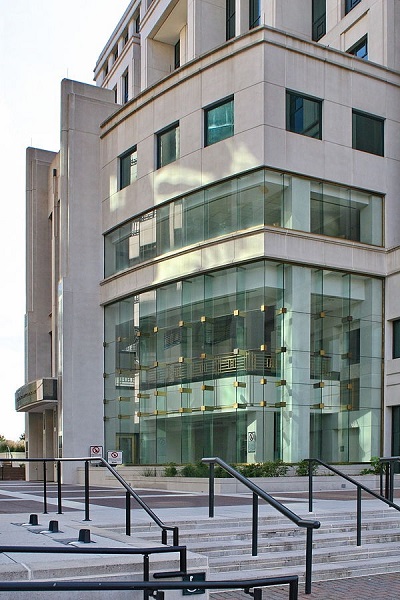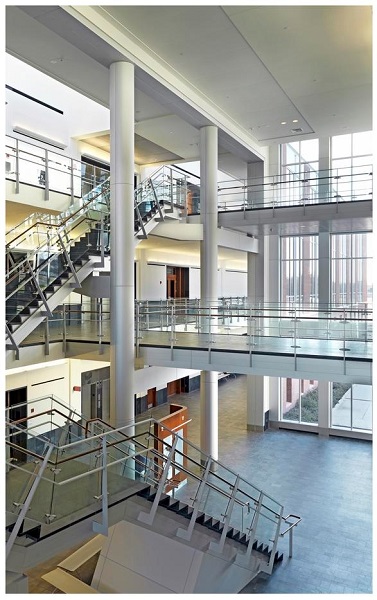About Courthouses
There is no single standard courthouse that fits all situations. Courthouses vary in size from the one judge single courtroom courthouse to large urban high rise buildings with as many as 70 courtrooms. They may serve as general all purpose facilities with judges hearing all types of cases (criminal felonies, misdemeanors, civil, family, juvenile, traffic, landlord and tenant) or handle only one type of case.
Court facilities
should reflect the
independence, dignity, and importance
of our judicial system
in their design.
 |
|
Arlington County, Virginia Courthouse |
Regardless of the types of cases they handle, or their size, all courthouses contain many of the same basic components:
- Public Entrance/Lobby
- Courtrooms
- Appellate Courts
- Trial Courts
- Judicial Chambers
- Clerk's Office
- Court Administration
- General Court Support
- Prisoner Handling and Circulation
- Prosecuting Attorney's Office
- Public Defender's Office
- Probation and Parole
- Victim Witness Support
- Litigant Pro Se Support
- Building Management and Support
- Records Management and Storage
- Secure Parking
 |
|
Plymouth, Massachusetts Trial Court Atrium |
Each of these unique spaces should be designed to address nine essential planning and design considerations:
The courthouse is a busy center of activity involving a variety of judicial operations and numerous people with different responsibilities. Some portions of the facility are developed as inviting areas for the visiting public, while others are organized to meet the requirements of the justice system professionals who work in the building every day. The facility is programmatically complicated and technically demanding. Its configuration must reflect proper zoning strategies that support the optimal functioning of each major part.
To accommodate the needed circulation patterns, the courthouse should be organized into areas that are similar in function, operational needs, physical characteristics and access requirements, and must have three separate major circulation systems:
- Public - anyone with business in the courthouse
- Private - judges and court personnel
- Secure - defendants
Two zones account for the areas that intersect and/or support the other zones:
- Interface - spaces where public, private, and secure zones interact
- Service - support areas include loading docks, building maintenance, storage areas, etc.
